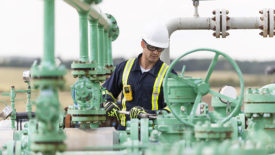Home » Keywords: » pollutants
Items Tagged with 'pollutants'
ARTICLES
Wildfire clean-up crews face multiple health risks
Hazards include toxic inhalation, harmful pollutants, heat exposure
November 8, 2022
Public health experts applaud EPA bid to update effluent standards
Changes would affect existing and new steam-electric power plants
May 15, 2013
EPA finalizes revisions to clean air standards for stationary engines
Updated rule provides extensive public health protections, slashes costs of compliance
January 15, 2013
Get our new eMagazine delivered to your inbox every month.
Stay in the know on the latest safety trends.
SUBSCRIBE TODAYCopyright ©2024. All Rights Reserved BNP Media.
Design, CMS, Hosting & Web Development :: ePublishing



